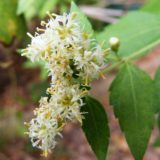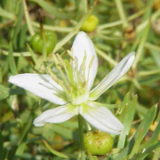What Plants Are Used As Snuff?

The History and Traditional Use Of Snuff
Throughout time, man has found many ways to partake in herbal exploration. Some religions require the ingestion of certain plants during religious ceremonies. Some cultures rely upon certain plants for recreational celebration. Other times, people use plants for the many effects they may provide. A snuff is a powdered version of a plant, which is ingested through the mucous membranes of the nasal passages. This means the plant material is snorted through the nose. Still, snuffing (or inhaling) can be done for a variety of purposes (like any other administration method). Snuff is used for medicinal, ceremonial, shamanic, and recreational purposes alike, in nearly every culture it is present. And no matter if a plant is used as snuff occasionally or habitually, the ritual remains alive today in many cultures of the world.
What are Snuffs Used For in Traditional Indian Cultures [Tribal Use of Snuff]
Although snuff has been used for so many different things, especially throughout time and around the world, there are some extremely notable uses that have been well documented. In the Old World, there are many documented medicinal uses for snuff, however, the powders are typically referred to as “sneezing powders”. In India, there are several medicinal texts that date back to ancient times outlining the use of plants as snuff (this includes hemp). Similarly, many texts from medicine men of African tribes, have indicated the use of Kanna as a medicinal snuff.
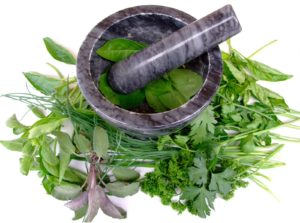
The use of snuff in older times was most certainly not limited to Europe, Asia, and Africa. Many tribes throughout the Americas are also very familiar with the nasal inhalation of certain powdered plants for their psychoactive effects. Though, admittedly North American Indian tribes seem to have less ceremonial or shaman it can use for snuffs than the indigenous cultures of Central and South America. Still, much literature exists detailing the Native Americans shamanic use of a few different snuffs in some of their healing rituals. South America is much more akin to using psychoactive snuffs in both, rituals and for recreation. There are many tribes throughout the Amazon and the Andes who employed snuffs which were believed to allow shaman to communicate with gods. Some snuffs were believed to allow communication with one’s ancestors.
South America may possess the most psychoactive snuffs, but it is also the home to the the world’s oldest snuff history. There are also some snuffs which have been employed before battle to give prophecy or strength. The oldest known snuff tray was found more than 1000 years before Christ. The oldest known snuff device dates back even longer, more than 3000 years before Christ. And there are many documented reports of Indians in cultures in South America using snuff around that time and ever since.
What is the Most Commonly Used Snuff?
Tobacco remains the most commonly used snuff on the market and around the world. There are still many companies which produce snuff specifically as a way to ingest tobacco more safely than smoking it. Many of these companies, as well as the media and what little research exists, suggests that smokeless tobacco is much safer than inhaling tobacco via cigarettes. Still, in the United States, the general surgeon warning remains on every pack of smokeless tobacco sold advising people that it is not a safe alternative to smoking. This is probably due to the fact that studies on rats have indicated smokeless tobacco as still being carcinogenic.
Other Plants That Can Be Used As Snuff
There is a rather extensive list of plants that have been used as a snuff in many Indian and tribal cultures around the world. Some of these plants provide stronger effects than others. Some of these plants are only used as snuff and ceremonial purposes, while others have recreational purpose as well. The list is in no particular order.
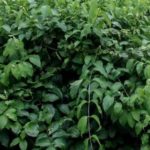 Banisteriopsis caapi
Banisteriopsis caapi
This plant is very commonly used in the popular hallucinogenic drink Ayahuasca, but it is also used as a snuff throughout tribes in the Amazon.
Virola calophylla
Also known as Epena and Nyakwana, it is snuffed in ceremonially throughout many South American tribes. It is a hallucinogen, and also known to be used by medicine men and shaman.
Justicia pectoralis
The Mashihiri plant leaves are typically mixed with other plants to make a snuff. This snuff is most popular among the Waika and other Indians of the Amazon and of Brazil.
Maquira sclerophylla
The Indians of the Brazilian Amazon know Maquira as Rape dos Indios. It is used in a variety of tribal ceremonies. The snuff is prepared from the dried fruit.
 Datura spp.
Datura spp.
The Datura plants have been used for so many things. It is very commonly used as a snuff in tribes (even today) around the world.
Myristica fragrans
Nutmeg is well known to be used throughout Western society and ancient cultures alike for its psychoactive effects. It was very commonly employed as a snuff for narcotic purposes and is especially popular among prisoners and poor tribes for its easier accessibility (and cheap price).
Sceletium tortuosum
Much of the plant can be used to create a snuff. The leaves and roots are commonly chewed, or ground up and turned into a snuff.
Anadenanthera culubrina
The seeds and bark of this plant are turned into a snuff commonly used in Argentina. The seeds and pods of this plant contain DMT, among other tryptamines.
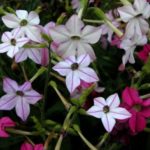 Nicotiana spp.
Nicotiana spp.
Still, the list would not be nearly complete without tobacco. The tobacco plants are very commonly found used as snuffs in tribes throughout history and still today. In fact, many companies around the world had created snuff products specifically as a way of marketing smokeless tobacco. Smokeless tobacco is still used today.
Is Snuff Still Used Today?
Although the use of snuff today is nowhere near as prevalent as it were in ancient times, or even a hundred years ago, it is still very popular throughout Central and South America, Africa, New Guinea, and several island cultures around the world. Many of the snuffs that are used in religious or ceremonial rituals today, are prepared very similarly as they were in ancient times. A lot of the snuffs can be more complicated, especially in older tribes, as they are combinations of plants…a formula that has been well crafted and improved upon for (sometimes) hundreds or even thousands of years. Still, there is no doubt that traditional as well as modern snuff preparations can be found regularly used in tribes of throughout the world.
